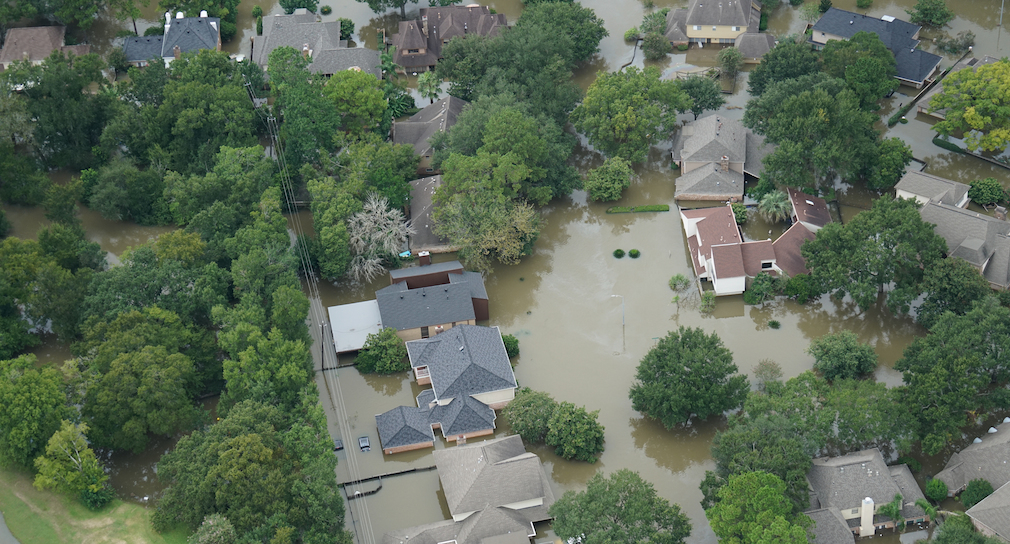Homeowners in Texas, Florida and Puerto Rico have returned to their homes and have begun to assess the damage caused by hurricanes Harvey, Irma and Maria. As mortgage servicers begin to address the concerns of these homeowners, they should pay heed to lessons learned from Superstorm Sandy, which damaged or destroyed more than 650,000 homes in New York, New Jersey and Connecticut five years ago.
The total estimated $71.4 billion cost of Sandy included not only repairs to homes but also significant repairs to public infrastructure and projects designed to prevent future storm damage. Moody’s Analytics estimates that Hurricanes Harvey and Irma caused between $75 and $95 billion in residential property damage alone and there are an estimated 4.3 million mortgage-encumbered homes in the Harvey and Irma-related FEMA disaster area counties. The impact of the 2017 hurricane season is thus likely to rival, if not dwarf, that of Sandy. Lenders and servicers can prepare by considering the immediate, short term and longer term impact of prior hurricanes, such as Superstorm Sandy, on their business.
Immediate impact
Mortgage servicers are already fielding a heavy flow of customer inquiries about missed or delayed payments and waiving late fees. In the wake of Superstorm Sandy, many loan servicers adopted forbearance programs that waived fees for late payments, and permitted homeowners to skip or make partial payments for a period of time without triggering delinquency reports to credit reporting agencies.
In addition, homeowners will have inquiries about damaged homes, repairs and insurance claims. Mortgage contracts and the National Flood Insurance Program require that insurance payments be made payable jointly to the homeowner and mortgage companies that hold a secured interest on damaged properties. As a result, homeowners must work with their mortgage servicer and originator to ensure any insurance proceeds are released on a schedule that can facilitate repairs and/or rebuilding where financially feasible.
As a result of the increase in customer communication, servicers will need to increase staffing in call centers and correspondence groups and train employees to respond to inquiries stemming from the hurricanes. Conversely, fewer resources will be needed for loan originations, as applications for new loans will decrease in hurricane-affected regions.
Short-term impact
As with Sandy, in response to Harvey, Irma and Maria, the Department of Housing and Urban Development (HUD) has announced a 90 day moratorium of foreclosure on “affected borrowers” including, but not limited to, those that live within Presidentially-declared disaster areas. In addition, Fannie Mae and Freddie Mac announced 90 day moratoriums on foreclosure sales and evictions. Other lenders may adopt similar foreclosure moratoriums that extend to mortgages that are not federally-insured and servicers must work to communicate these polices to borrowers.
Despite foreclosure moratoriums that delay new foreclosure proceedings and foreclosures on loans in default prior to the storms, an increase in defaults and foreclosures in the coming months is likely. Due to the devastating impact of the storms, numerous properties have been destroyed beyond repair. Some customers may decide to give up their home and stop making mortgage loan payments altogether.
Black Knight Financial Services has predicted that the mortgage industry could see up to 300,000 new delinquencies as a result of Hurricane Harvey alone. Extended forbearance programs and foreclosure moratoriums are designed to allow homeowners time to recover from financial distress. Longer-term effects are thus expected and defaults and increased foreclosure activity may last for years.
In addition, as initial forbearance periods granted to borrowers impacted by Harvey, Irma and Maria expire, servicers will need to evaluate loans that are not current by the end of forbearance periods for workout options. These could include an extended forbearance period, a repayment plan, or other loss mitigation options.
Long-term impact
Servicers should expect that the HUD-announced 90 day moratorium on foreclosures on FHA-insured home mortgages may be extended. Following Sandy, that initial 90 day moratorium was subsequently extended for an additional 90 days. Six months after Sandy, the FHA also made an additional year of forbearance relief available to an estimated 285,922 qualified borrowers.
State legislators may also pass foreclosure relief measures. Thus, servicers must prepare to comply with FHA programs as well as any new state laws. It is important to note that hurricane-relief laws may be passed years after the storms. Almost five years after Superstorm Sandy, on February 10, 2017, New Jersey Governor Chris Christie signed into law the Superstorm Sandy Recovery Act which provides homeowners whose primary residence was damaged by Hurricane Sandy an opportunity to seek foreclosure relief and creates a forbearance period that extends to July 1, 2019.
Finally, there will be litigation. After Sandy, numerous homeowners sued their mortgage companies alleging that they improperly withheld insurance proceeds preventing them from making repairs and in some cases alleging personal injuries arising from exposure to mold. Other suits brought by homeowners alleged mortgage companies violated the Fair Credit Reporting Act or incorrectly advised homeowners that they did not need flood insurance. Following Sandy, lenders and servicers were also pulled into homeowner litigation with insurers, contractors, and even neighbors who alleged damage to one property was caused by a defect on a neighboring hurricane-damaged property.
Mortgage lenders and servicers should anticipate managing similar litigation amidst increased foreclosure litigation and the volume will be significant. In response to the influx of suits after Sandy, the Eastern District of New York set up a Superstorm Sandy docket in an effort to efficiently resolve insurance disputes relating to the storm. As of June 5, 2014 more than 1,000 cases were pending. In New Jersey, a Superstorm Sandy Flood Litigation Committee, comprised of eight federal judges, created case management guidelines to streamline the adjudication of over 2,000 pending suits. Despite these procedures to streamline litigation, cases arising from Superstorm Sandy are still being litigated in the courts even today.
The effects of the hurricanes will be felt by the mortgage loan industry right away – but the impact will continue for years. Servicers can learn from the past and be prepared.





